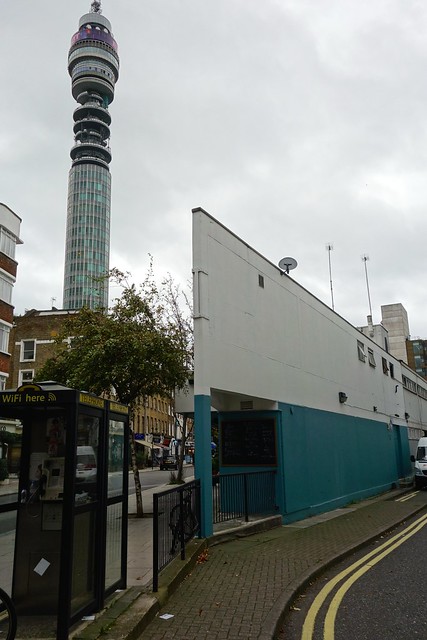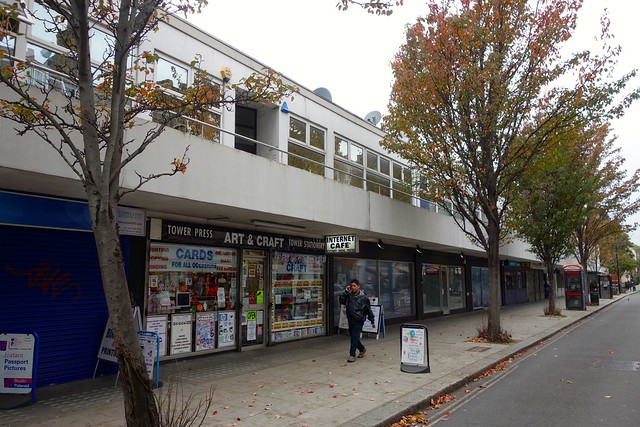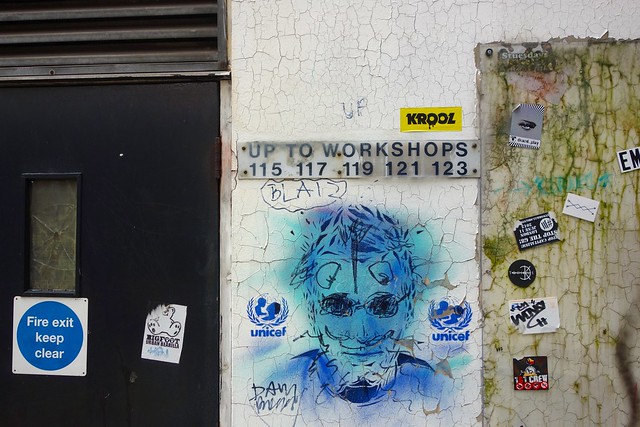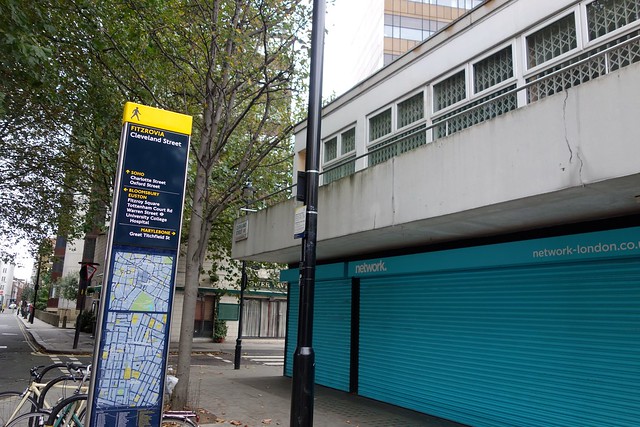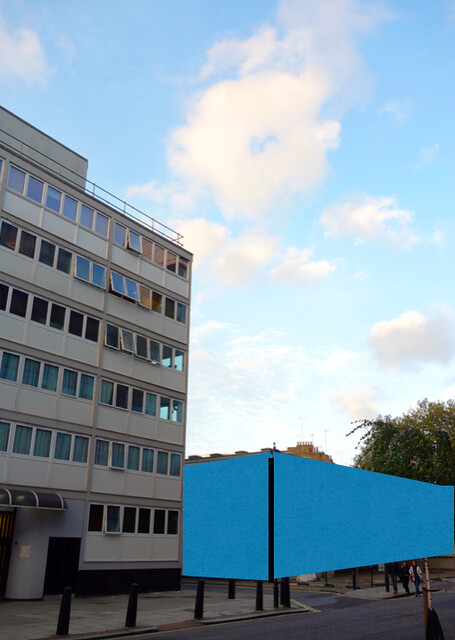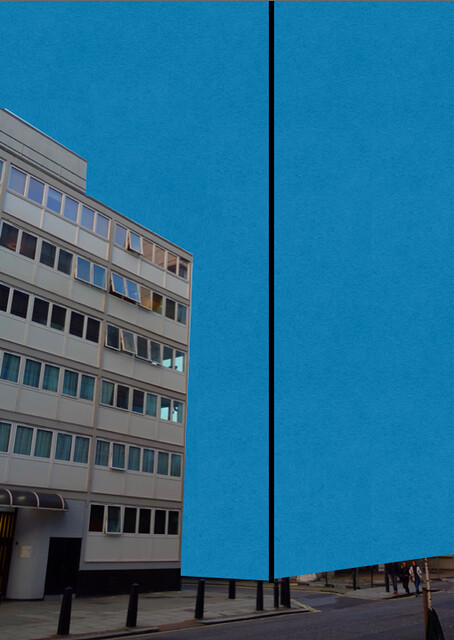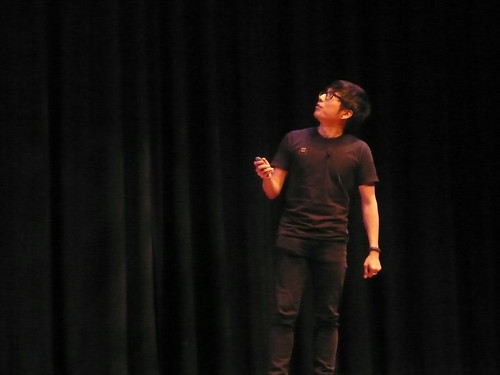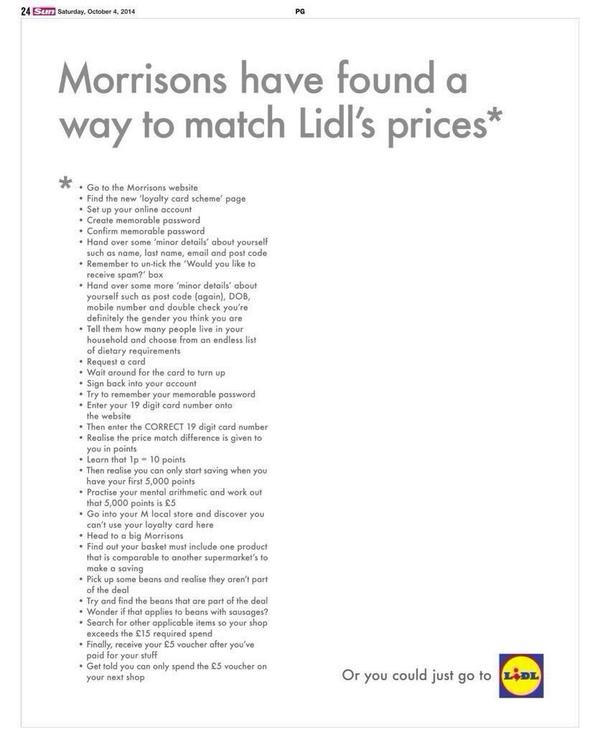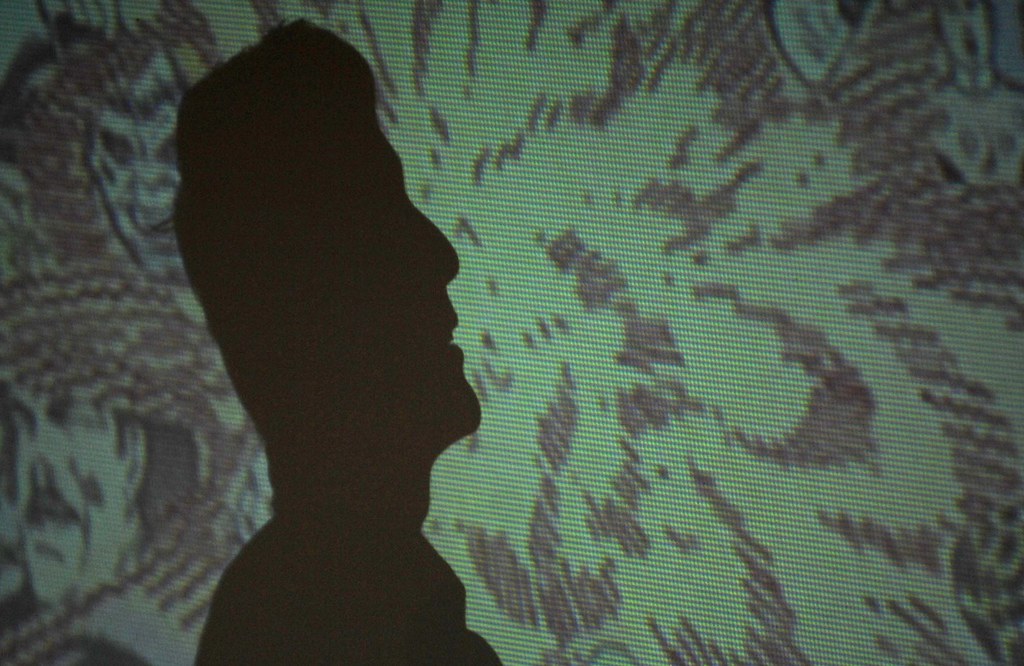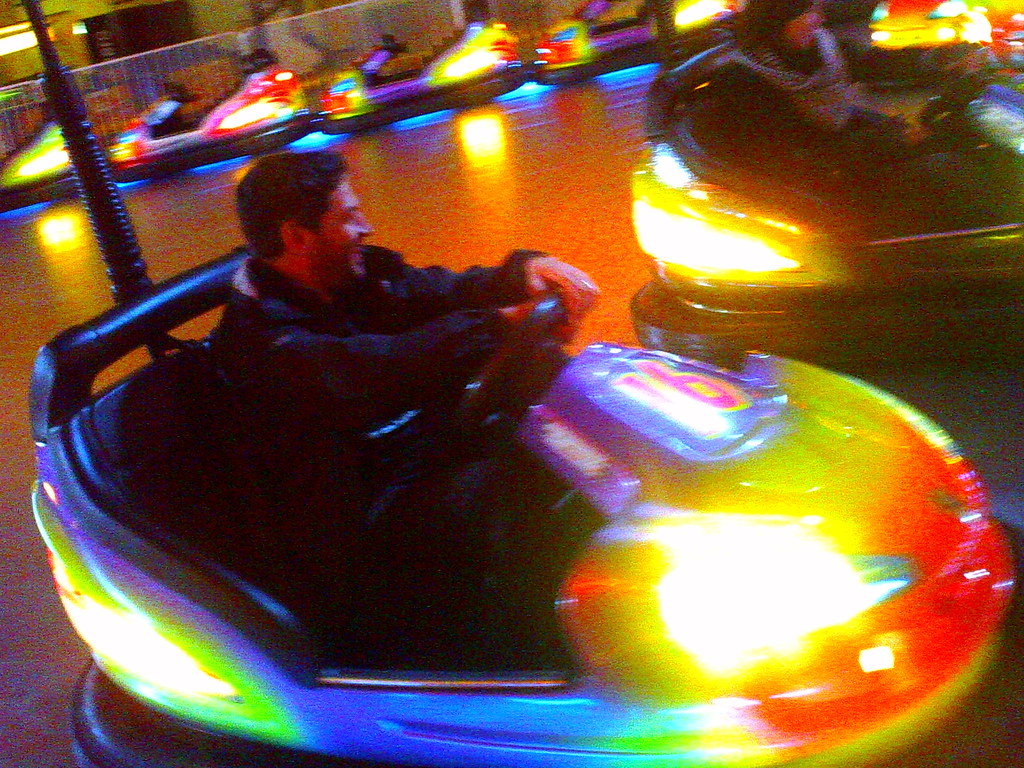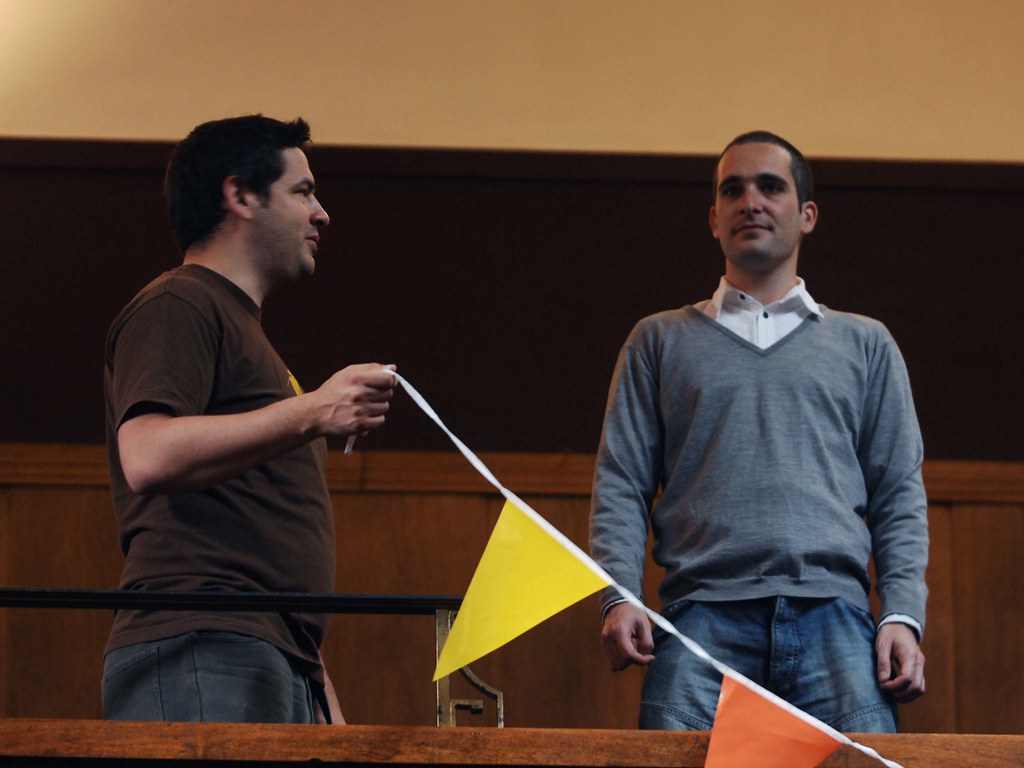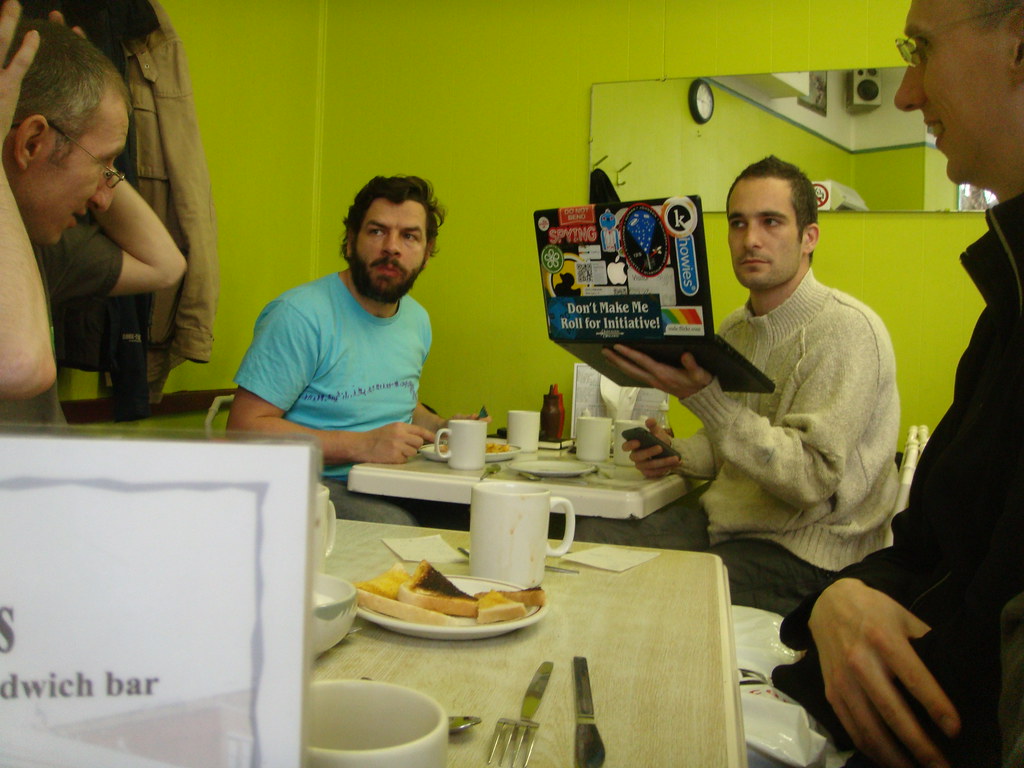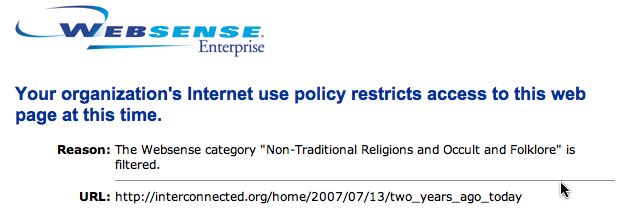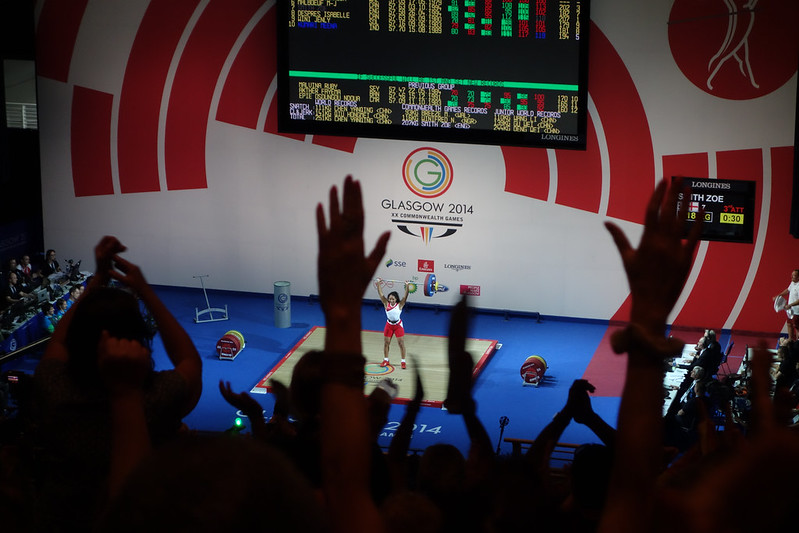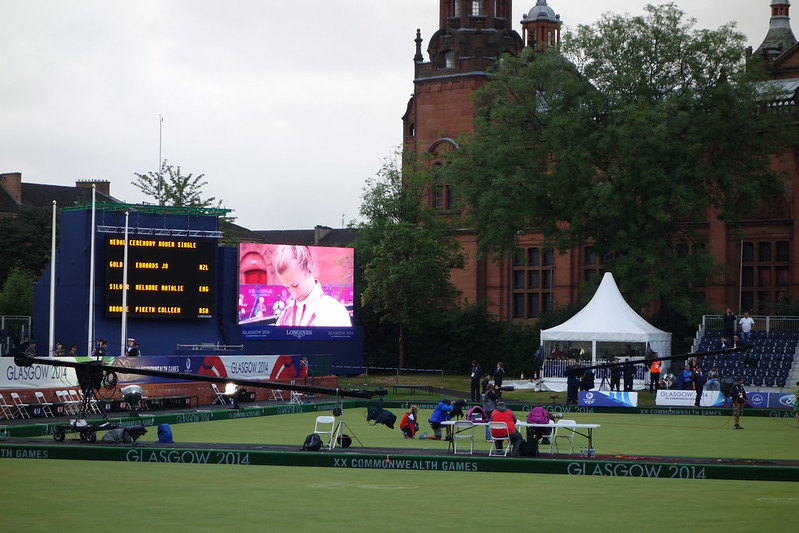Russell Davies
As disappointed as you are
About | Feed | Archive | Findings | This blog by email
never mind the content
October 22, 2014 | Permalink | TrackBack (0)
fitzrovia triangle
There's a curious triangular building at the top of Cleveland Street. If you've ever noticed it, it's probably because there's a Banksy stuck on the thick end.
It was built in the late 60s by the firm of Fredrick MacManus & Partners as part of a joint development with Holcroft Court.
(Holcroft Court is shown above, on the right, it's the rectangle with trees in it. The triangular section to the right of it is the bit we're talking about now.)
Here's a picture taken from the BT Tower:
The development was described by Architectural Digest in 1967:
"The building reflects an awareness of its context in its scale and in the way the accommodation has been organized to make a place particular to the dwellings around it."
And more recently, by Iqbal Aalam:
"I consider it as an important and successful urban renewal scheme of its time, which was very cleverly slotted in existing 18th century pattern of streets and with out any ‘gimmicks’, got on with the job of providing high density practical housing with ‘Rossi-like’ dignity."
And, tangetially, in an LRB review by Owen Hatherly:
"a glassy, Mediterranean block of flats and shops in Clipstone Street in Fitzrovia"
I suspect that if the building owners had looked after it a bit better it would be a recognised sixties classic by now. The shops in it are a slightly odd mix; the friendliest stationers in the world, a printers, a courier firm, a bookie and TV production companies that make those channels you see high up on the EPG. This side of the street is Westminster, the other side is Camden. For some reason the Camden side always seems more flourishing and lively.
And until recently there was a petrol station in this large petrol station shaped hole. It was very beloved of taxi drivers, there aren't many places left in Central London to refuel. Holcroft Court is that building behind there, with all the windows.
Look round and you'll detect hints of the optimism of its construction. The second-floor has, or had, 'workshops' - perhaps an attempt to hang on to the area's manufacturing or ragtrade heritage.
And if you peek through those trees you'll see the Tower Tavern. Combine that with Tower Stationery and the Tower Salon round the corner and you'll suspect there was once an attempt to create a 'Tower Quarter'.
Now, however, this triangular block has been bought and is going to be developed by Dukelease. And, as Fitzrovia News reports, locals, particularly the residents of Holcroft Court, are a bit concerned about the plans. They feel that the construction of a ten-storey building where there was previously only a two-storey one might alter the amount of light getting to their homes. They are apparently not reassured by some orange arrows on the plans saying 'sunlight penetration'.
I don't have any fancy visualisation tools to show what that might look like but this is a view that shows the height of both buildings:
And if you make the old building into a simple blocky shape it looks like this:
And if you grow that from two stories to ten it looks, roughly, like this:
They're also worried that moving the petrol station from the large petrol station-shaped hole on the wide bit of Clipstone Street into the narrow right-opposite-the-flats bit of Cleveland Mews that might create quite a lot of extra noise and diesel pollution right next to where people sleep and live.
Fortunately the good people of Dukelease aren't just going to plough ahead with this stuff, they're keen to make sure local people can express their views on the plans, so, their PR company Four Communications held an exhibition showing some plans and asked people to fill in a questionnaire.
It's here:
I didn't fill it in myself because there's no indication what level of data protection you'd be afforded. I'm sure that just dropped off the questionnaire.
What's odd though is that just answering these questions doesn't seem to give you any room to express views on what would seem to be the major issues of the development - how big it is and where the petrol station goes.
You're asked to agree/disagree with five statements:
Q1: The existing site is unattractive and detracts from the streetscape.
My answer would be - It's a rather splendid and thoughtful design that integrates with the streetscape really well, it's only unattractive because it's been so badly looked after. So I guess I'd put Strongly Disagree.
Q2: The proposed design is a great improvement.
Pretty straightforward this one. No it's not. Strongly Disagree.
Q3: A mixture of uses is appropriate for this site.
Straightforward again. A mixture of uses is appropriate, that's what currently exists. Strongly Agree.
Q4: The provision of more homes, including onsite affordable housing, is welcome.
Well, more housing is clearly a good idea, and more affordable housing is welcome, so, Strongly Agree. But, it doesn't feel like we're getting at the important issue - how much housing, what proportion of affordable housing, and how high it should be stacked.
Q5: The petrol station and associated retail are important amenities and should be brought back to use on this site.
Well, again, this is a bit odd. I'd Strongly Agree with bringing those things back, so I'd say that, but that's not the major issue - where are they going to be? That's the important thing.
It's almost as if Four Communications could report on the findings of the questionnaire and not reveal any concerns about the development.
Strangely it seems, they've done something similar in the past. They held a consultation about the development of a Sainsbury's in Hackney which was accused of being biased and unfair. They had to do the whole thing again. The Hackney Citizen pointed out that:
"Four Communications has until recently also boasted on its website that it “helped UKCMRI [UK Centre for Medical Research and Innovation] gain planning consent from LB [London Borough of] Camden for the biggest medical research centre in the UK despite widespread and co-ordinated local opposition”.
"What’s the point of having a consultation when the company holding it makes no secret of its joy at having defied the widely-held views of local residents?"
Ah well. I'm sure they'll sort it out. It's going to be interesting watching the whole process unfold though. This area has changed so much in the last few years it'd be a shame if the remaining quirky and interesting bits get blotted out.
October 20, 2014 | Permalink | TrackBack (0)
dear conference organiser
hello!
You've asked me to speak at your conference or conference-like thing. Thanks!
Here are some things you should know. They might seem unreasonable. Just be grateful you're not reading this.
1. I'm not going to send you my presentation in advance
I understand why you want it, you'd like to double-check the AV and paste my presentation amongst the others with your logos and sponsors in between, so it's 'seamless'. I understand that.
However, I think you'll get a better presentation if you let me fiddle with it right up to the last minute. That, after all, is part of the point of presentation software - it's a tool designed for last minute changes. I like to do last minute changes. I change the presentation based on what the other people speaking at the conference have said. I think that makes for a better presentation. It's live. Otherwise I might as well just send you a video.
I think the audience would trade the seamlessness for each of the presentations being a bit better.
2. I'd like to present from my laptop, I'd like it on stage with me
I will bring all the requisite dongles. I will arrive as early as you like to make sure it all works.
I'd like it on stage because I use presenter view. It makes presentations better. Sadly I have never presented anywhere that's managed to make presenter view appear on the 'comfort monitors'. (Though I have heard rumours that TED do this.)
I would also like to be in direct physical control of my laptop. Remotes are too slow, vary too much and they're an extra thing to go wrong. I know what I'm doing with my laptop. Plus, I use a lot of music and video and I need to fiddle with the volume.
Having the computer off stage and giving people a remote almost always ends up with the speakers doing this:
This is what happens when people are given a clicker and don't have an intutitive sense of where their presentation is. They point their clicker at the screen (where it probably isn't) and continually check to make sure the right thing is there. They look at the audience less.
Hope that makes sense. See you very early on the day.
(PS. If you've not asked about filming and then you start filming I'm likely to be grumpy. More grumpy.)
October 07, 2014 | Permalink | TrackBack (0)
clarity as a business model
I've had the phrase 'clarity as a business model' in my head for a while - probably since I heard a splendid NPR podcast about fine print.
Being clear about things that are normally muddy seems like a potential competitive advantage.
It might mean making the most of something you do anyway. Apple, for instance, don't get revenue from ads and personal information in the same way Google and Facebook do - so they can be much clearer about privacy.
And you'll probably have seen this Lidl ad:
The point is not that it's a clever ad, it's that it's a clever business model, a cleverly clear one. The ad is enabled by a better, simpler product/service.
And sometimes there's probably opportunity in being clear about the previously opaque. This post, for instance, about predictive analytics talks about how hotel chains routinely overbook their rooms to ensure they're full. This was probably seen to be OK in the days when you could disappoint someone and only that person would know. These days, with all that social media around, you may want to be clear about the assumptions built into your booking algorithms. Cheaper but risky! More expensive, but more certain!
Of course, very often, the challenge is for organisations to get out of their own way - the lack of clarity stems from their relentless instinct to brand things and invent new names for them.
Thus, tfl can't just say 'keep your oyster card and your contactless card separate', they have to invent 'card clash' - which really doesn't help, it just gives them an extra thing they have to explain.
(An example borrowed from Rachel)
(Our rule of thumb for public service things is:
1. Tell people the name you're thinking of for your new thing
2. If they say 'oh, what does that do?' get a clearer name)
The big opportunity though seems to be to find things that are murky and confusing and to redesign them so that they're clear. There are some obvious candidates - phone tarrifs, loan payments, energy bills, EULAs - but the interesting ones will be where we don't even notice things are murky any more.
October 06, 2014 | Permalink | TrackBack (0)
if you're not a bottleneck
I came across this advice from Eric Schmidt about handling email, which, sort of, makes sense.
“Respond quickly: There are people who can be relied upon to respond promptly to emails, and those who can’t. Strive to be one of the former. Most of the best — and busiest — people we know act quickly on their emails, not just to us or to a select few senders, but to everyone.”
Well, it absolutely makes sense if you're at the very tippy top of a large organisation and what that organisation mostly wants you to do is make decisions. If, in fact, you're a bottleneck.
But it reminded me that most of the business advice you get is from people who are at the top of organisations, and they're by definition not typical. I presume, for instance, that Google and Eric Schmidt have jointly adapted such that he only has to send short, quick emails.
Advice derived from looking at succesful people is very often to behave in a way that only the powerful can get away with. There should be more advise for the less powerful.
October 04, 2014 | Permalink | TrackBack (0)
Non-Traditional Religions and Occult and Folklore
No reckons. Just to say, if I've done anything interesting in the last ten years or so, it's entirely because I was trying to impress this lot.
September 09, 2014 | Permalink | TrackBack (0)
Fractionally
September 01, 2014 | Permalink | TrackBack (0)
silly grin
This is splendid. The best bit is the silly grin on his face at about 41 seconds, celebrating the goal scored as a result of the pass he side-foots while looking the other way.
August 07, 2014 | Permalink | TrackBack (0)
Glasgow 2014
The Commonwealth Games were fantastic. Splendidly organised, welcoming and it's a great way to see a city. It gives you a reason to explore, to see things you wouldn't otherwise, a reason to be there.
And I love seeing sports I know nothing about, you spend the first little while working out the scoring system, then settling on someone to cheer for and then noticing the human drama.
(This made the weightlifting brilliant - there's so much emotion and preparation compressed into each lift, each moment is massive. The tiny figures in the distance still communicate a ton of effort and expression. Well done Zoe!)
I was rather struck with Laura Massaro's squash racquet. I think it's a Head Xenon 135 and it looked like the grip was in a rather vibrant fluro yellow/green. I've not photographed it well.
It reminded me of a trip to the Nike archives I made, several years ago. They showed us a bunch of very early Nikes they'd just bought off a Japanese collector. Many of them very bright, almost neon, even after 30 years or so. The designers I was with were fascinated by them, asking about the inks/dyes/whateverthey'recalled, the archivist dashed their hopes - there would be no way we could use these any more, they'd breach all sorts of environmental regulations, probably made out of quite nasty stuff.
Presumably the recent rash of fluoro all over the high street and the football pitch means there have been some breakthroughs in less noxious inks. Somewhere at a chemicals business a Head of Hue is getting a well deserved bonus.
I spent quite a lot of time at the bowls wondering if you could cheat.
Could you infiltrate some sort of sphero technology into your wood, making it steerable after its release? Do they x-ray the woods? That would put paid to that.
And, presumably, you wouldn't need it to be that controlable. You could get quite a lot of advantage with just the ability to move some weight inside the wood at the right moment, shift its centre of gravity slightly. Would you need a compatriot in the crowd with a control? Could a human even make it work and make it seem natural? Would you, in fact, need a system that could see the jack and the other bowls, could monitor the speed and direction of the wood being bowled and then apply a subtle shift to its centre of gravity to put it somewhere more useful without anyone noticing? Is that even possible? How many cameras would you need? Could you do it with a bunch of networked phones?
Badminton - same question.
August 05, 2014 | Permalink | TrackBack (0)

